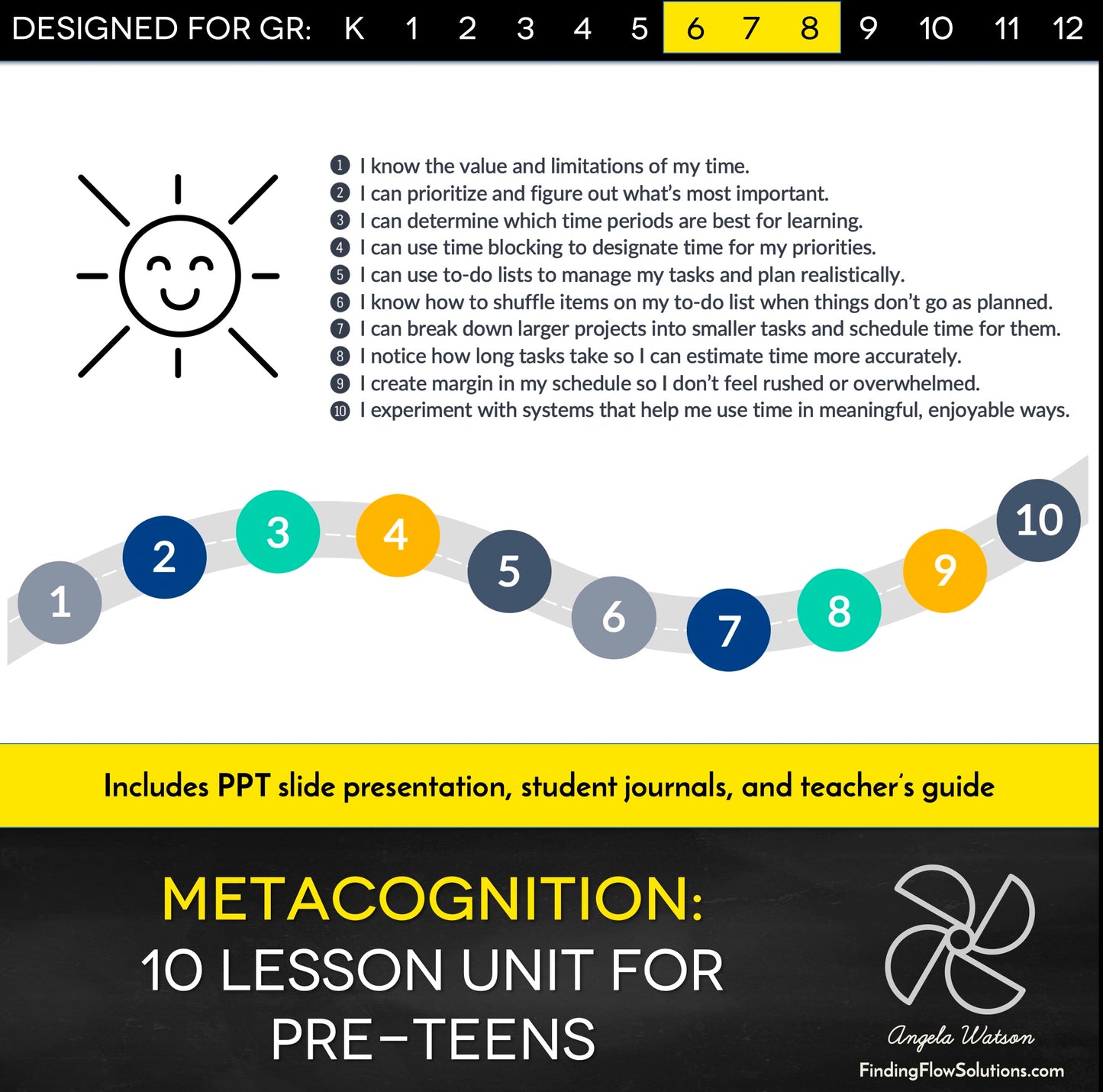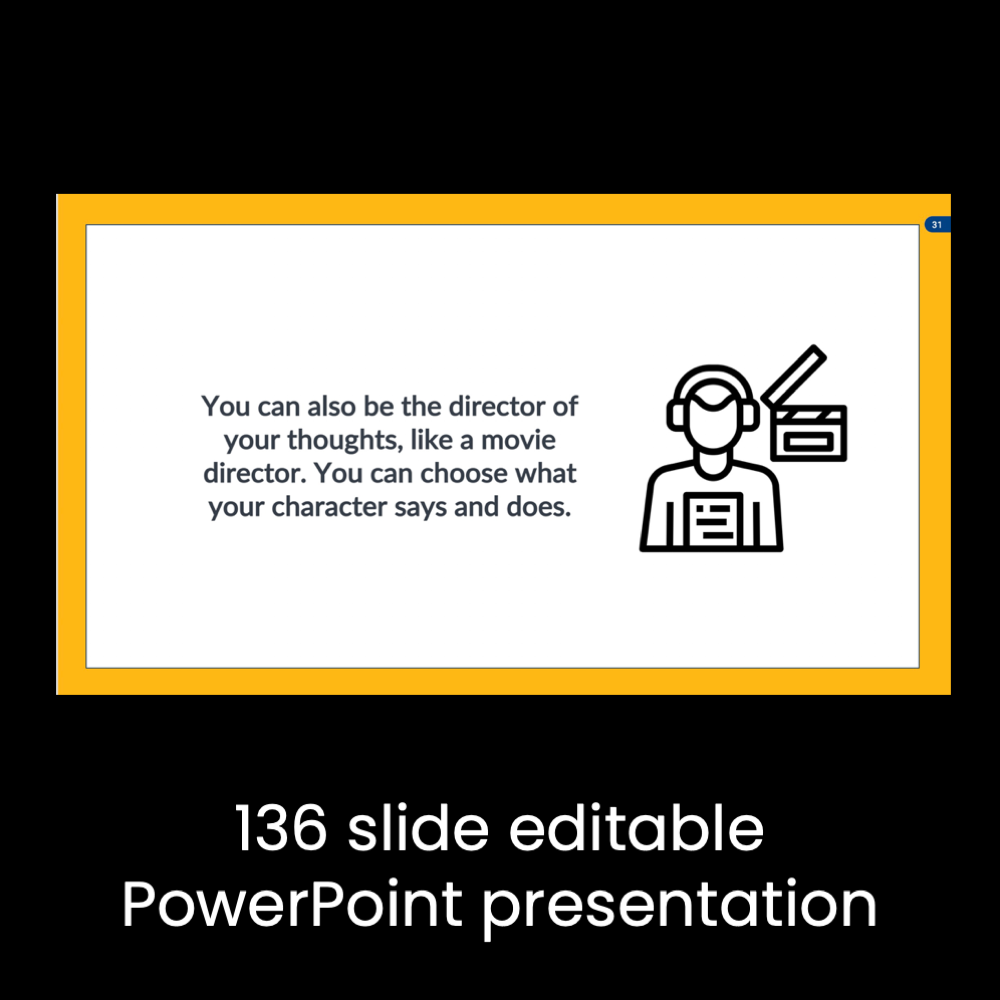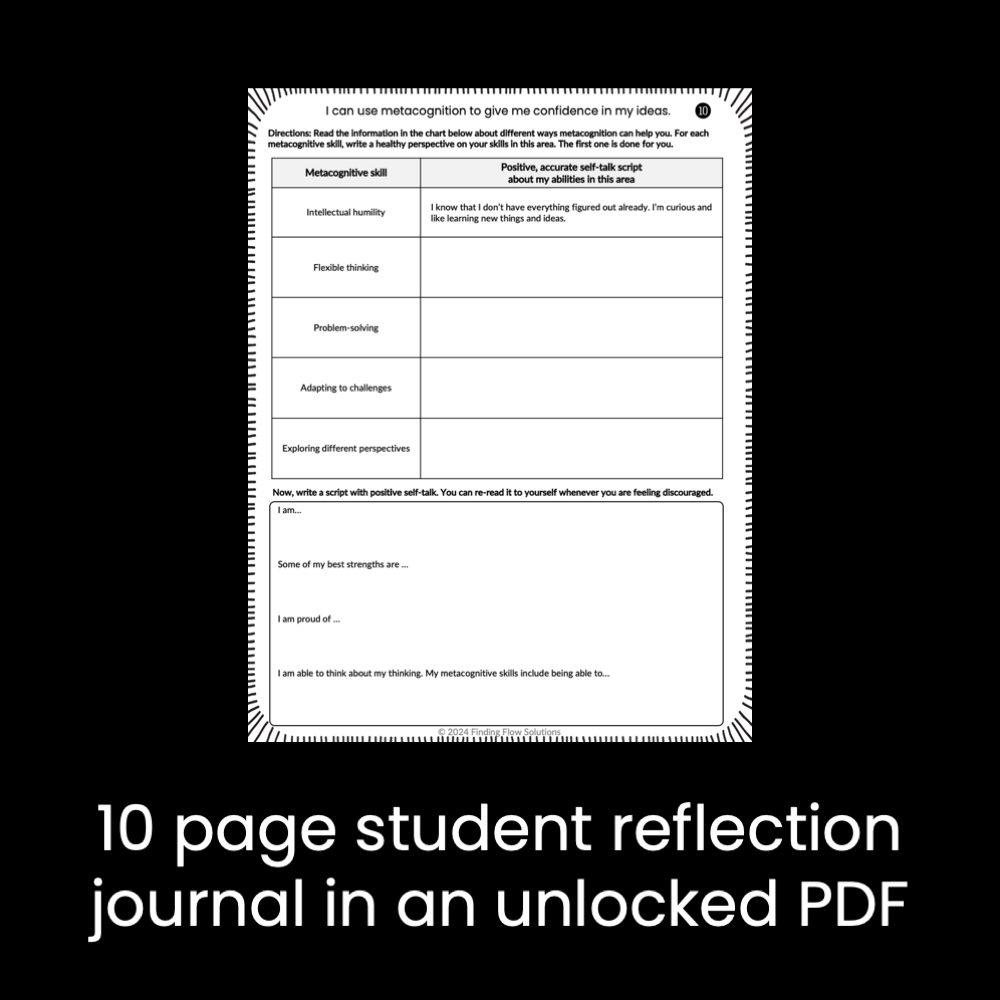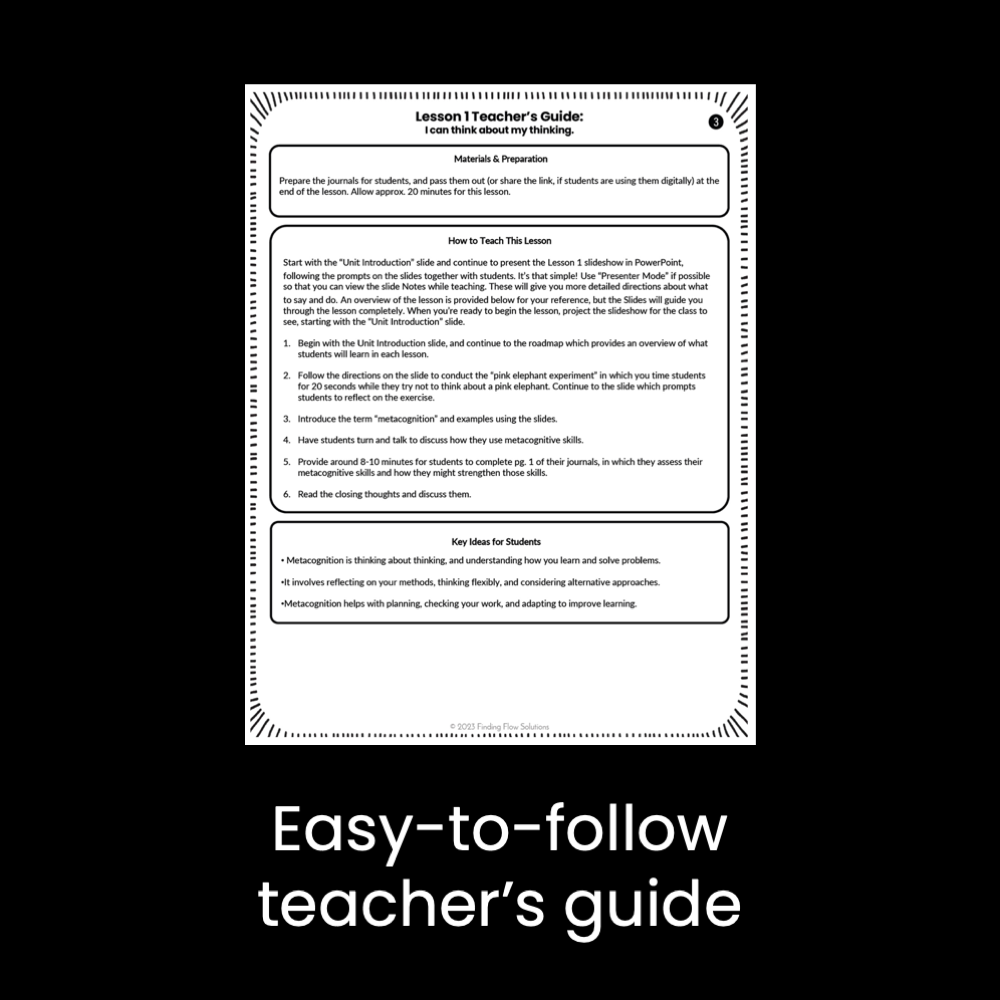1
/
of
6
Truth for Teachers
Metacognition and Perspective: 10 lessons with PPT and student journals
Metacognition and Perspective: 10 lessons with PPT and student journals
Regular price
$12.00 USD
Regular price
Sale price
$12.00 USD
Unit price
/
per
Shipping calculated at checkout.
Couldn't load pickup availability
Teach students to make connections between their ideas, and understand where those ideas come from! Understanding metacognition can help students observe their thinking, choose thoughts that are accurate and healthy, feel confident in their opinions and understandings, and be open to changing their minds when they learn something new.
Through this 10-lesson unit, students will experiment with approaches that help them meet the following goals:- I can think about my thinking.
- I can be the watcher of my thoughts.
- I can think on purpose.
- I can examine/analyze thoughts to see if they’re true.
- I can choose helpful self-talk and perspectives.
- I can learn optimism and notice the positive.
- I can practice intellectual humility.
- I can respond to new information with curiosity.
- I can think interdependently and notice connections.
- I can use metacognition to give me confidence in my ideas.
- A teacher’s guide (1 page per lesson): This tells you how to prepare and gives you the key ideas taught in the lesson.
- An editable slideshow presentation to guide you and your students through each lesson: Teaching the concepts and introducing activities to students is super simple: just follow the prompts on each slide in PowerPoint! 103 slides are included, all with professionally designed graphics. All video clips are embedded in the slides so you can play them offline and won’t have problems with website blockers.
- A 10-page student self-reflection journal in both printable and typable formats: The length of the journal depends on the unit, but the format is designed to minimize printing and paper use with no filler, fluff, or half blank pages. You can also assign the journal to students in your LMS (such as Google Classroom) and keep everything digital.
MORE IN THIS CURRICULUM LINE:
- Unit 1: Foundations of Flow
- Unit 2: Neuroplasticity and Growth Mindset
- Unit 4: Self-Advocacy and Self-Regulation
- Unit 5: Work Ethic and Responsibility
- Unit 6: Collaboration and Communication
- Discounted bundle of all 6 middle school units
What grade levels is this for?
This is geared for preteens (middle school). While younger students may not be as adept at metacognition, they can still benefit from being exposed to these concepts and begin to apply productivity skills in the classroom. There are units designed for high school in this product line, but if you want to teach this specific topic to high schoolers, it should be developmentally appropriate.
What subject areas is this for?
These units are designed to facilitate productivity and deepen student understanding in EVERYTHING they learn, both in school and outside of it. These habits of mind will support students in reading comprehension and writing, along with scientific and mathematical thinking. There are several opportunities in each unit to have students practice applying what they are learning about productivity to your usual curriculum and lessons.
Can this be used outside the regular classroom setting?
Yes! Any group setting will work: homeroom, advisory periods, study hall periods, before/after school programs, group tutoring, etc.
Can students do these lessons entirely on their own?
No, there is guided instruction in every lesson that the teacher facilitates, and multiple opportunities for students to learn with a partner and group. A self-guided version for individual students (in the form of a journal) will be available in 2024.
How much class time do the lessons take up?
Most lessons take 15-30 minutes. The only exception are lessons that guide students to apply productivity practices to your curriculum, meaning students will be working on your usual activities, concepts, and skills during the implementation of the Finding Flow lessons.
How do I pace the lessons with my students?
Any way that fits best into your curriculum! You can implement one lesson each day, one lesson each week, or 2-3 each week.
Still not sure? Try out the FREE 5 unit lesson on flow theory here first.
Share











